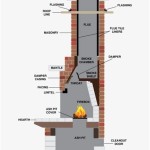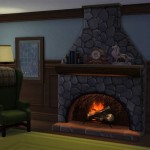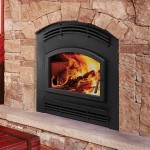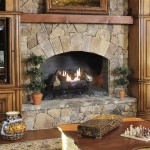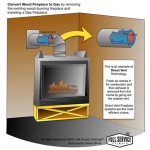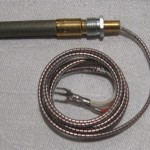Putting a Wood Stove in Your Fireplace: A Comprehensive Guide
Many homeowners with existing fireplaces consider installing a wood stove as a more efficient and environmentally friendly heating option. While a fireplace offers a certain ambiance, its heating efficiency is often significantly lower than that of a properly installed wood stove. However, retrofitting a fireplace with a wood stove involves careful planning and execution to ensure safety and compliance with local regulations.
This article provides a comprehensive overview of the process of putting a wood stove in a fireplace, highlighting essential considerations, installation steps, and safety guidelines. It aims to equip homeowners with the necessary information to make informed decisions regarding this type of home improvement project.
Key Point 1: Assessing Your Fireplace and Chimney
Before initiating any installation, a thorough assessment of the existing fireplace and chimney is paramount. This evaluation determines the feasibility and scope of the project. Key aspects to consider include:
Fireplace Dimensions: The physical dimensions of the fireplace opening are critical. The wood stove must fit comfortably within the firebox while adhering to manufacturer-specified clearances from combustible materials surrounding the fireplace. Precise measurements of the width, height, and depth of the fireplace opening are necessary to select a suitable wood stove model.
Chimney Condition: The integrity and condition of the chimney are of utmost importance. A professional chimney sweep should inspect the chimney for any structural damage, such as cracks, loose bricks, or deteriorated mortar. Addressing any existing damage is crucial to ensure the safe and efficient venting of combustion byproducts. Creosote buildup within the chimney flue must also be removed through a professional cleaning.
Chimney Flue Size: The diameter of the chimney flue must be appropriately sized for the wood stove being installed. Insufficient flue size can lead to poor draft, incomplete combustion, and the potential for dangerous carbon monoxide buildup. Consult the wood stove manufacturer's specifications to determine the required flue diameter for optimal performance.
Local Codes and Regulations: Prior to any work, researching and understanding local building codes and regulations pertaining to wood stove installations is essential. These codes may dictate specific requirements for clearances, chimney liners, hearth protection, and permits. Failure to comply with local regulations can result in fines and the potential for unsafe operating conditions.
Key Point 2: Selecting the Right Wood Stove and Chimney Liner
Choosing the appropriate wood stove and chimney liner are critical steps in the installation process. Matching the stove to the heating needs of the space and ensuring proper venting are essential for efficiency and safety.
Wood Stove Selection: The size and heating capacity of the wood stove should be carefully considered based on the square footage of the area to be heated and the climate. Over-sizing can lead to inefficient burning and excessive heat, while under-sizing will result in insufficient heating. Look for wood stoves that are EPA-certified, indicating they meet emission standards for cleaner burning.
Chimney Liner Installation: In many cases, installing a stainless steel chimney liner inside the existing chimney is necessary. A liner provides a smooth, continuous path for exhaust gases, prevents creosote buildup on the chimney walls, and protects against potential chimney fires. Choosing the correct diameter and insulation level for the liner is vital. Insulation improves draft and minimizes creosote formation.
Insulated vs. Uninsulated Liners: Insulated liners are generally recommended, particularly for exterior chimneys or in colder climates. Insulation helps maintain flue gas temperatures, improving draft and reducing creosote condensation. Uninsulated liners may be suitable for interior chimneys in milder climates, but consultation with a professional is advisable.
Professional Installation: While some homeowners may be tempted to tackle the installation themselves, employing a qualified and certified wood stove installer is strongly recommended. Professionals possess the necessary expertise, tools, and knowledge to ensure safe and compliant installation. They can also provide guidance on selecting the appropriate stove and liner for the specific application.
Key Point 3: Installation Process and Safety Considerations
The physical installation of the wood stove into the fireplace involves several steps, eachrequiring careful attention to detail. Safety is paramount throughout the entire process.
Hearth Protection: Ensure adequate hearth protection is in place. The hearth must extend beyond the wood stove a specified distance to protect the flooring from sparks and embers. Local codes typically outline the required dimensions and materials for hearth protection.
Connecting the Stove to the Chimney Liner: Carefully connect the wood stove to the chimney liner using appropriate stovepipe and connectors. Ensure all connections are secure and airtight to prevent flue gas leakage into the living space. Use high-temperature sealant where necessary to create a tight seal.
Clearances to Combustibles: Maintain the manufacturer-specified clearances from combustible materials, such as walls, furniture, and drapes. These clearances are crucial to prevent overheating and potential fire hazards. Heat shields can be used to reduce clearances if necessary, but consult with the manufacturer or installer to ensure proper application.
Carbon Monoxide Detectors: Install carbon monoxide detectors on every level of the home, particularly near sleeping areas. Carbon monoxide is a colorless, odorless gas that can be deadly. Regular testing of the detectors is essential to ensure they are functioning properly.
Proper Ventilation: Ensure adequate ventilation in the room where the wood stove is located. Proper ventilation provides fresh air for combustion and helps prevent the buildup of harmful gases. Consider installing a fresh air intake to supply the stove with outside air.
First Fire and Break-In Period: Following installation, conduct a small test fire to allow the stove to "break in" and cure any remaining manufacturing oils or coatings. Monitor the stove closely during the initial fires to ensure proper operation and identify any potential issues. Refer to the manufacturer's instructions for specific break-in procedures.
By carefully assessing the fireplace and chimney, selecting the right wood stove and chimney liner, and adhering to proper installation procedures and safety guidelines, homeowners can successfully install a wood stove in their fireplace and enjoy the benefits of efficient and reliable wood heating. Consulting with qualified professionals throughout the process is highly recommended to ensure a safe and compliant installation.

Can You Install A Wood Stove In Fireplace Direct Stoves

Converting A Fireplace To Wood Burning Stove Chesneys

Converting A Fireplace To Wood Burning Stove Chesneys

Can You Install A Wood Burning Stove In An Existing Fireplace

How To Prepare A Chimney For Wood Burning Stove Houzz Ie

Can You Install A Wood Burning Stove In An Existing Fireplace

Your Guide To Wood Stove Installation Full Service Chimney

How To Install A Wood Stove Step By Instructions

Can I Put A Wood Stove In My Fireplace

Have A Pro Install Wood Stoves Greenville Sc Blue Sky Chimney

